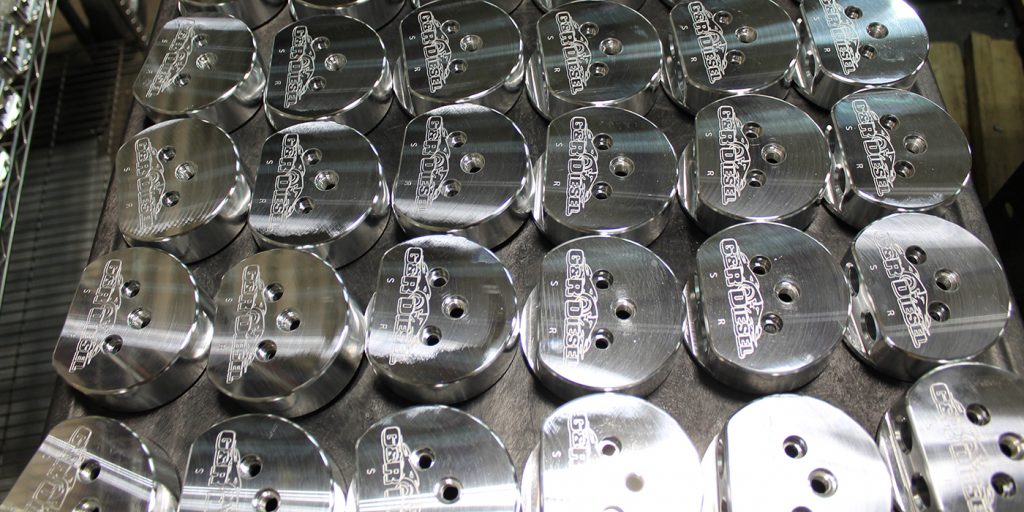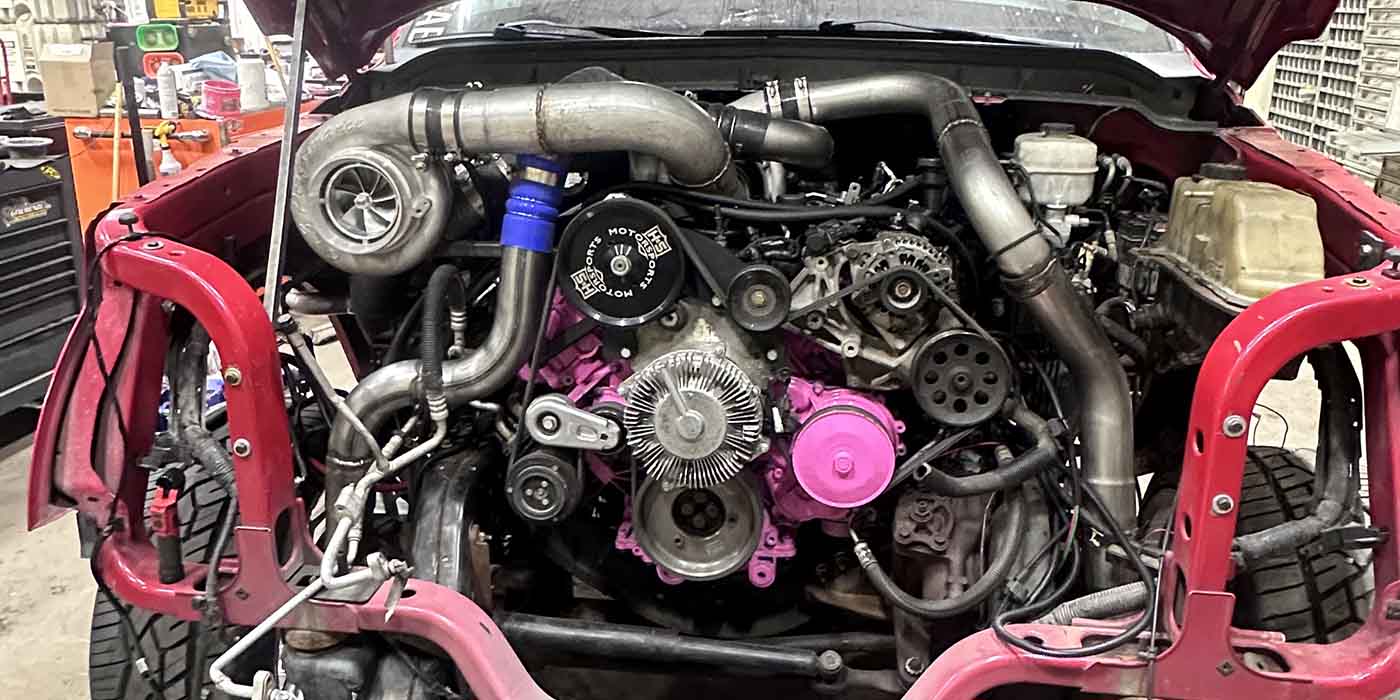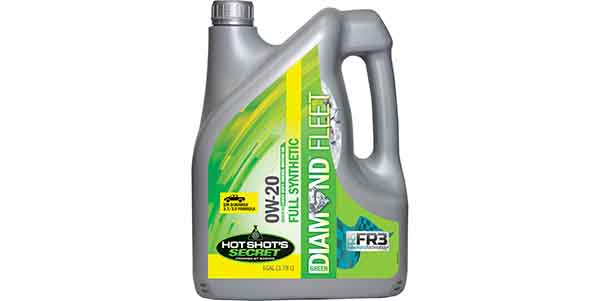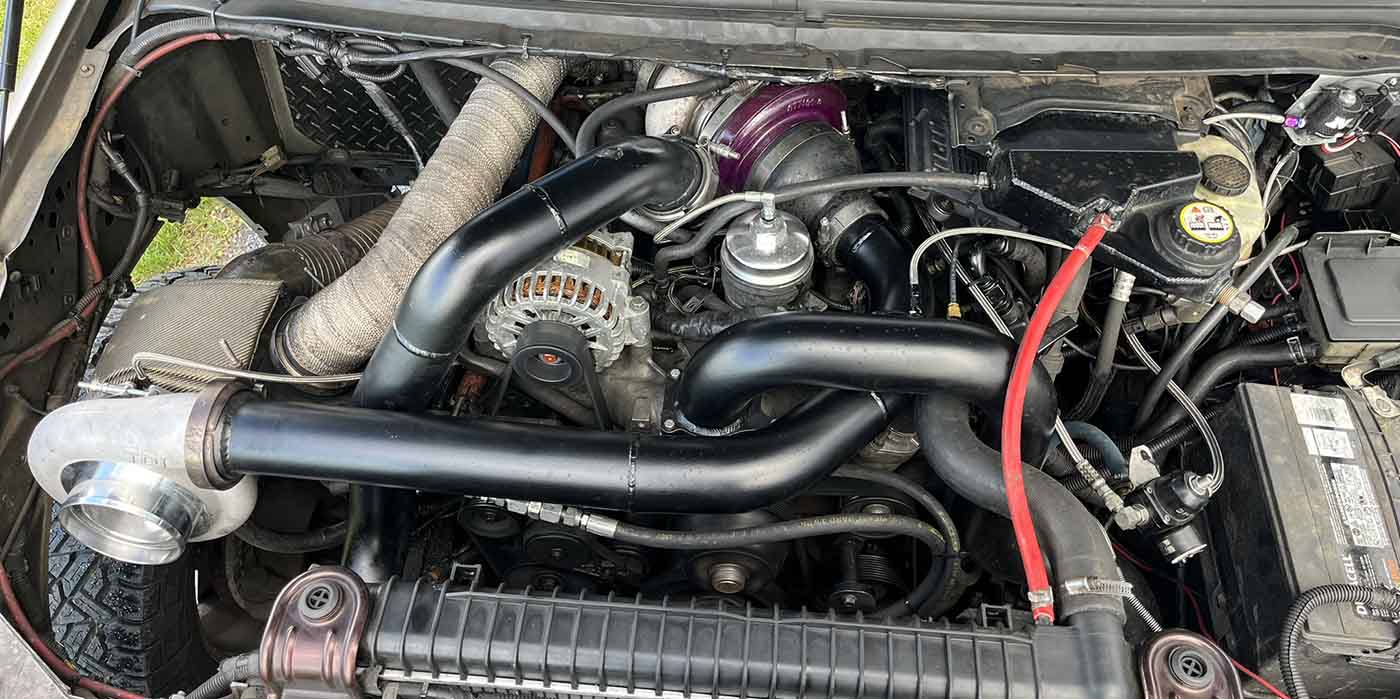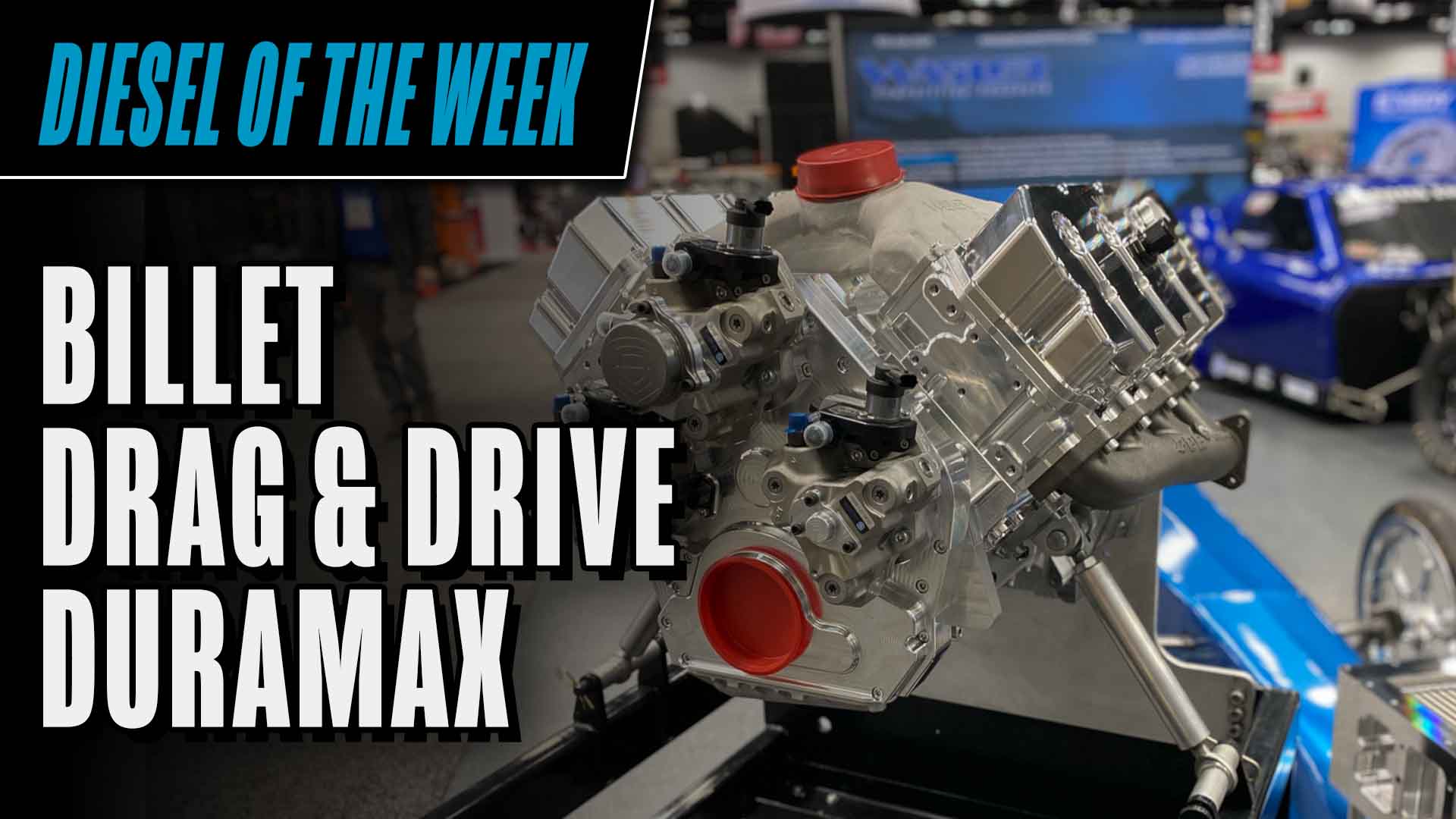If you ever travel through the back roads and hills of Northeastern Ohio, you just might come up on the small town of Fredericksburg. Quaint and unassuming as you pass through, keep your finger on the jake-brake because in the blink of an eye, you’ll roll up on G&R Diesel, a performance and repair shop on the outskirts of town.
G&R Diesel first opened in 2008 working on class 8 trucks, but with a strong market and the growing popularity of diesel pickup trucks, it wasn’t long until they added diesel performance to their list of services. Their full-service repair shop currently does anything from regular maintenance to engine rebuilds, transmission work, turbochargers, and performance. Doubling as an R&D department, the repair shop is also the catalyst for their own in-house brand of aftermarket performance parts.
The owner of G&R Diesel, Galen Hostetler, constantly evolves the business to stay ahead of the competition and current with the market. Hostetler explained that he grew up in the excavating business with his father. They did maintenance to their own equipment, where he learned the art of diesel repair, but the experience also taught him the importance of knowing and taking advantage of the markets that are key to success.
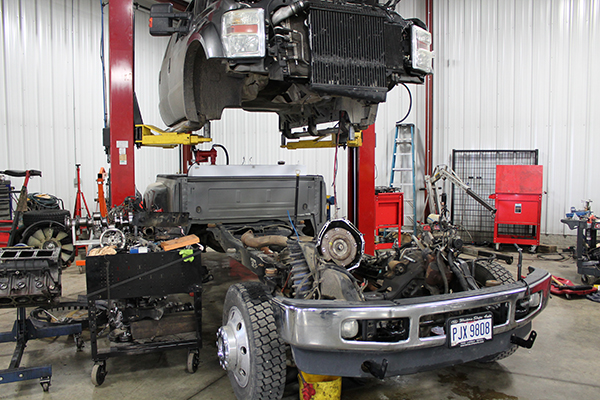
“Twelve years ago, we started doing repair work on semi-trucks and we did all kinds of maintenance,” Hostetler says. “We got into diesel pickups through local companies and the next thing we know the parking lot was full of pickups. Within less than a year, we were so busy we quit excavating.”
Performance is a permanent part of their business, and a fun part of it admits Hostetler. But over the years, they have followed the market as it evolved into different areas. “When we started, there were no performance shops around,” Hostetler says. “Now, most diesel shops around are doing it, and there are a lot more shops than there used to be, making it difficult to compete.”
The repair shop has evolved into 95% fleet maintenance and general maintenance and repairs. “The demand for fleet maintenance has gone way up because a lot of shops do not have the heavy diagnostic ability,” he says. “We have laptops with OE diagnostic software for the semis and we have the OE software for the Ford Powerstrokes, but for the rest of the pickup trucks we mostly use Snap-on.
“Last year, we did a couple mild-performance builds, but we don’t do as much as we used to. Occasionally we have requests for power increases on semi-trucks. The Cat C15 is popular and the common thing to do is pull off the factory compound turbos and replace them with bigger turbos.”
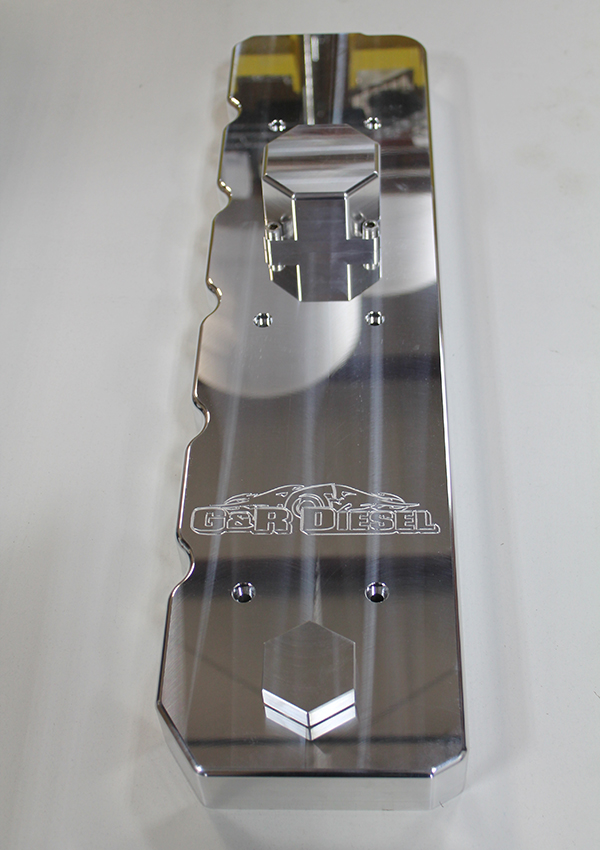
Turbo kits are some of the more popular products, which they continue to design and build, and when they design a kit, extreme care is taken to ensure that installation is easy and no details are overlooked. Because of their experience in repair and lessons learned in the repair shop, their goal is for their customers, whether another professional shop or a novice, to have a seamless experience installing their products.
One of their common kits is for a 6.7L Cummins. “With the 6.7 Cummins, once you put a tuner in it, the next step is a bigger turbo,” Hostetler says. “The OEM had to go to a Variable Geometry Turbo (VGT) to be able to create back pressure at idle or low rpm so that they can recirculate exhaust in order to make the EGR system function. VGTs typically don’t flow well on the exhaust side, so we make a lot of turbo kits for them.”
They are also currently working on a turbo kit for the 6.4L Ford Powerstroke. They come with compound turbos, but one is a VGT, so they are designing a Borg Warner S300/S400 kit, keeping both in the valley. “The 6.4L Powerstroke is getting a lot more popular since the trucks are less expensive to buy,” Hostetler says.
Even though there will always be a demand for high-performance, an aspect of market growth that G&R Diesel has capitalized on is bolt-on performance modifications and they have built a machine and fabrication shop that allows them to develop these products.
“In the grand scheme of trucks, out of 100, you might have five that guys want to make 800-1,000 horse, but you’ll have 95 that want a small performance gain,” Hostetler said. “There’s a much larger market for the parts that offer a small performance gain.”
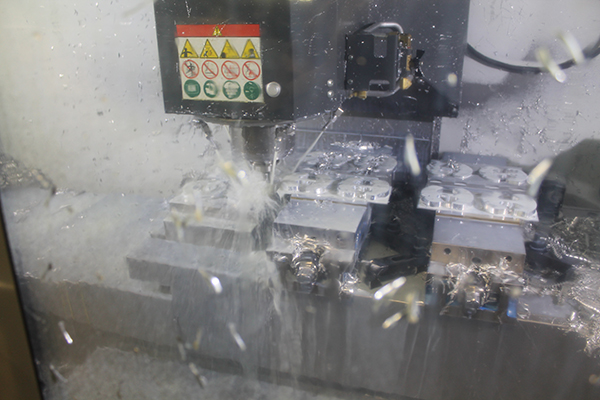
G&R was heavy into performance for about four to five years, Hostetler explained. In the shop, they continuously found that they were installing products that didn’t work as advertised or the workmanship was poor, so they decided to start making their own. They bought a small CNC mill and quickly discovered the possibilities of what they could make.
Most of their in-house line of performance parts is driven by what they see in the repair shop. If they see something that fails on a regular basis, they design something that will replace it and work better.
One of their products, however, a 6.7L Cummins billet aluminum valve cover, started as something fun. Hostetler made a single valve cover for his own personal truck with no intention of producing them, but he put it on social media and got a ton of interest. He decided to make a couple more and sold them right away; now they make 50 at a time.
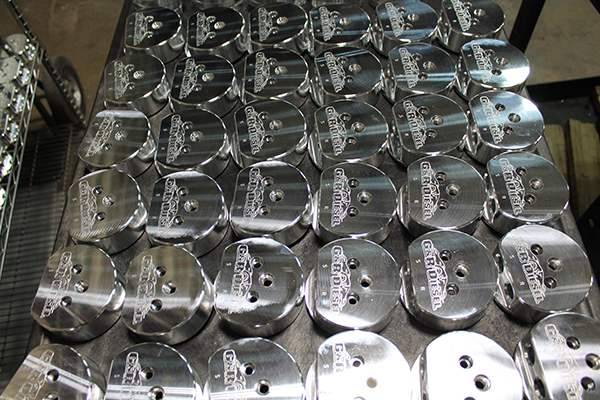
Another one of their products initiated in the repair shop is a fuel tank billet aluminum bottom sump with integrated fuel return. This kit was designed to eliminate the need of running the return line of an aftermarket fuel pump to the top of your fuel tank, cutting the installation time from a couple of hours down to a few minutes.
Ingenuity in repair drives the development of new products, and ingenuity in their markets keeps them ahead of the curve. “We try and find niche markets to get into, even down to phone cases,” Hostetler says. “We make a titanium phone case, not really engine related, but kind of fun.”
G&R Diesel has not only found a formula for success, but proven that you can have fun doing it. EB

